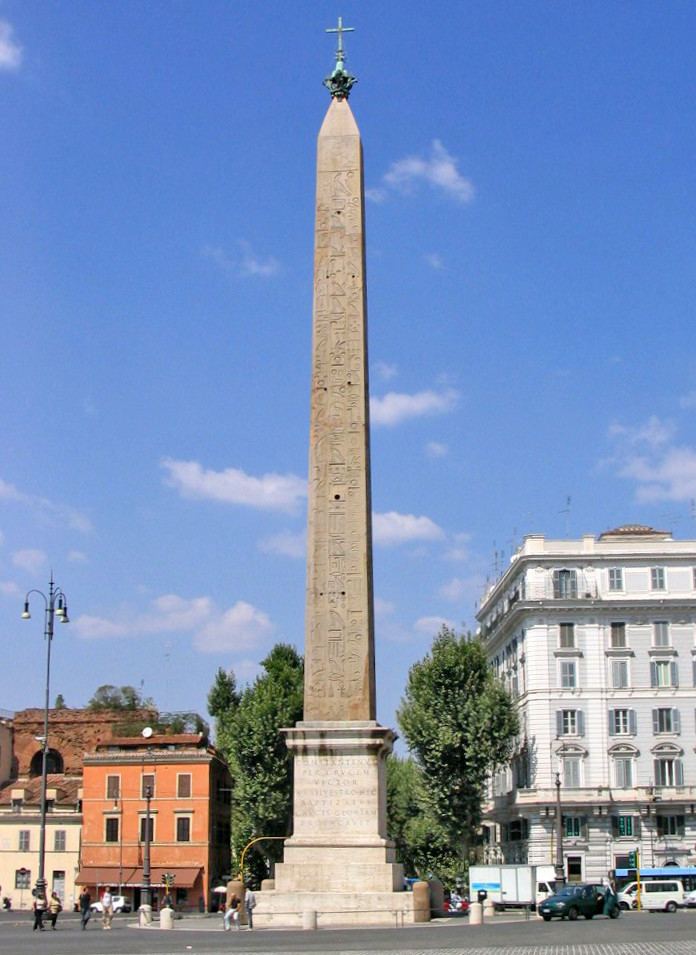Type Obelisk Height 46 m | Completion date 15th century B.C. Phone +39 06 0608 | |
 | ||
Address Piazza di S. Giovanni in Laterano, 00184 Roma, Italy Similar Flaminio Obelisk, Obelisk of Montecitorio, Obelisco Esquilino, Obélisque de la piazza N, Elephant and Obelisk | ||
The Lateran Obelisk is the largest standing ancient Egyptian obelisk in the world, and it is also the tallest obelisk in Italy, originally weighing 455 tons, but after collapsing and being re-erected 4 meters shorter, weighs around 330 tons., It is located in the square across from the Archbasilica of St. John Lateran and the San Giovanni Addolorata Hospital.
Contents
History
Originally from the temple of Amun in Karnak,map the obelisk was first brought to Alexandria over the Nile by obelisk ship in the early 4th century along with the Obelisk of Theodosius by Constantius II. He intended to bring them both to Constantinople, his new capital for the Roman empire. The obelisk never made it there.
Circus Maximus
After remaining a few decades in Alexandria, Constantius II had the Lateran obelisk shipped to Rome when he made his only visit there in 357. It was erected near the Egyptian obelisk called the Flaminio, which had stood since 10 BC where it was installed by Augustus to decorate the spina of the Circus Maximus.map There they both remained, until after the fall of the Western Roman Empire in the 5th century the Circus Maximus was abandoned and they eventually broke or were taken down. They were eventually buried by mud and detritus carried by a small stream there over time.
First person accounts have the original (Roman) base of the monument still in the Circus Maximus as late as 1589. It contained a narrative of Constantius' transport, raising, and dedication of "his father's" obelisk inscribed on its four sides as a long epigram.
Piazza San Giovanni in Laterano
Though pieces of the obelisk had been found in the 14th and 15th centuries, serious excavation was only made possible under Pope Sixtus V. The three pieces of the Lateran obelisk were dug up in 1587, and after being restored by architect Domenico Fontana, was made approximately 4 meters shorter. When it was erected near the Lateran Palace and basilica of St. John Lateran on 9 August 1588, it became the last ancient Egyptian obelisk to be erected in Rome. Its location was formerly the spot where the equestrian statue of Marcus Aurelius stood until 1538, when it was relocated to decorate the Piazza del Campidoglio on Capitoline Hill.
The obelisk was topped with a cross and the pedestal was decorated with inscriptions explaining its Egyptian history and its travels to Alexandria and Rome, mentioning the baptism of Constantine the Great.
